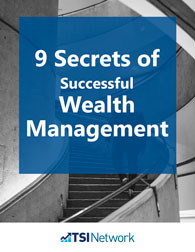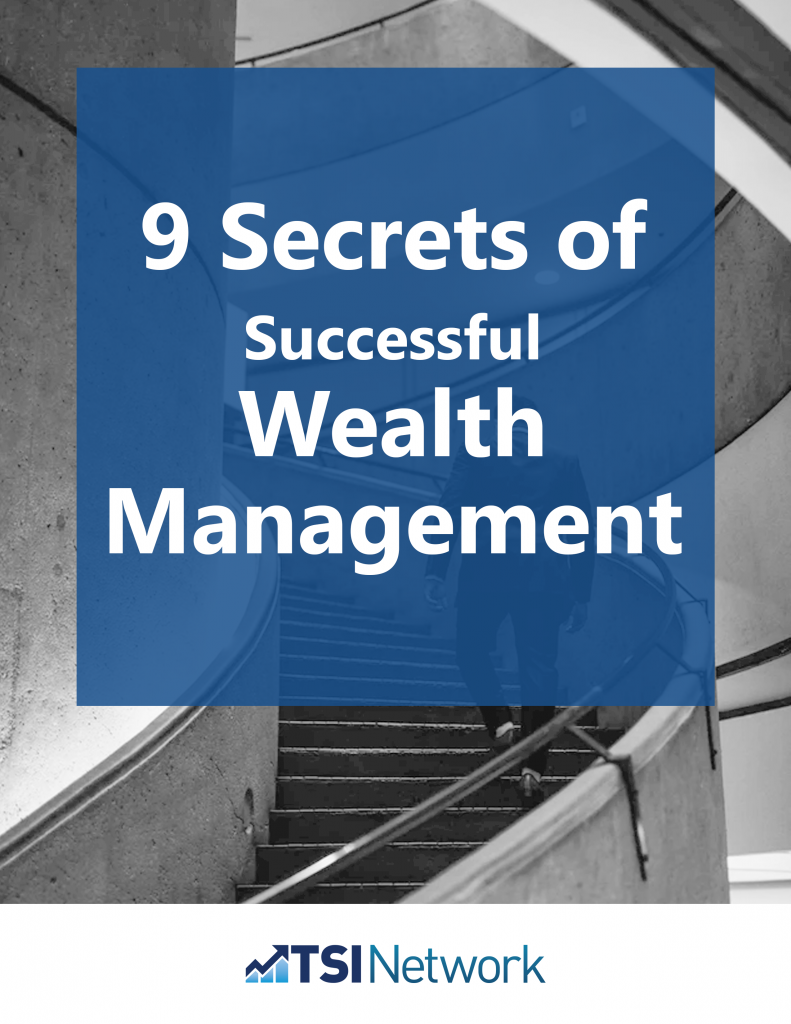Topic: Wealth Management
Pat McKeough's investment ideas as shown on YouTube
As the stock market rebounded in 2009 from one of the worst crises in years, Pat McKeough was invited by Jonathan Chevreau of the Financial Post to appear on his ‘Wealthy Boomer’ telecast. In a two-part interview, Pat aired his views on a wide variety of investment subjects.
Now, with the stock market coming off last autumn’s lows, we think it’s an appropriate time to replay the interview, entitled “40 stocks to retire on” on YouTube. Pat discusses not only specific solutions for volatile markets, but also how his investment advice applies in all market conditions. Here is part one of the interview (part two will be posted on Monday, February 20).
Below is the transcription of the interview.
Wealthy Boomer Interview Part 1
Jonathan Chevreau: Welcome to another Wealthy Boomer interview. Today our guest is Patrick McKeough. He’s the publisher of the Wall Street Stock Forecaster, The Successful Investor, some other newsletters, he’s a portfolio manager, and he recently launched tsinetwork.ca.
Welcome Pat
Pat McKeough: Thank you, Jon.
JC: So the new website is aimed at anybody and not just your paying subscribers, correct?
PM: That’s right, my paying subscribers can get current issues of their newsletters and the archives since they subscribed with a user name and password. But anybody who comes online can get samples of our work and other stuff we put out that isn’t part of the paid service. It’s more intended to give people a flavour of what we do, and to give them some analysis of markets and some direction as to what they should do with their investments.
JC: And of course you, like myself, joined Twitter this year. Are you finding that an effective way to get to your paying clients or are you starting to reach other people?
PM: It’s hard to say. You put stuff out there and you watch the number of followers go up and you assume there’s some interest there on their part. I find it’s kind of fun, too, just to be able to immediately throw out …
JC: A tweet!
PM: A tweet, yes, a thought about something and see how it looks in print. It almost acts like a notebook of things I might want to write more about.
JC: Now I recently received a mailer; I know you have some good direct mail pieces. The message, I think, was it’s time to buy. What is your message right now, in terms of the market bottom in March? Is now the great buying opportunity or are you a little cautious?
PM: I think the big mistake people make is to try to really fine tune it, because you’re never going to succeed in that. March was when we were planning that piece and of course it takes two or three months to get one of those things out in the mail. I think it’s still a good time to buy; the market is way up from March levels, but it’s way down from a year and a half ago. And I think if you look two, three or five years ahead, you’ll look back on this as an extremely attractive time to buy—but it may not seem that way two months from now.
JC: As I’ve done pieces with you over the years, two things stand out. You’re not really big on global stocks, you prefer North American stocks: Canadian and American stocks, quality blue chips. And you’re also not very keen on bonds, particularly at this market level. Can you talk to those two points?
PM: In the first place, with North American stocks alone, you have a common language and good investor protection laws; those are things you’re not really guaranteed in a lot of foreign investing. It seems to me that if you invest in a good portfolio of well-established multinationals, including Canadian and U.S. multinationals, you’re getting exposure to the growth in the third world. But people look and say, yes, but you don’t get a 50% rise the way you might in Brazil or China or India in a good year. That’s true, but there’s a speculative element in those markets. You can get a 50% rise in a penny stock segment of the Canadian market. So there’s a lot of volatility in foreign markets that won’t necessarily work to your benefit over a period of years or decades. So that’s why I prefer to go through well-established North American companies.
JC: And what are the five sectors you constantly tell people to spread their money around?
PM: Manufacturing and industry; resources and commodities; the consumer sector; finance; and utilities. And that’s going to cover just about 99% of anything you might want to buy in your investing career.
JC: Now you do have some global stocks. I think I’ve seen a few Japanese stocks once in a while in your Successful Investor. But are those ADRs in general?
PM: ADRs.
JC: So you still have that security of being on an American exchange.
PM: And the ADRs we recommend are of big companies that do follow North American standards of disclosure, and so forth.
JC: So an example might be … give me one or two?
PM: Sony would be an example. It spends a lot of money on research. It has a huge portfolio of assets and great worldwide distribution channels. It’s had a rough couple of years, but a lot of companies have had a rough couple of years.
JC: Toyota?
PM: Toyota is another one. It certainly has had a rough couple of years, but it did much better than any of the North American competitors.
JC: Now going back to the bonds. Right now there are a number of high-yielding dividend-paying stocks that are paying six or seven per cent, even some of the Dogs of the Dow which I wrote about quite recently. How do you compare that, if you have a bond that pays four and a stock six, although with the stock you have the danger of a dividend cut and capital losses? What do you think of the stock-bond tradeoff right now from the focus of yield?
PM: In bonds I prefer to stick with things that are government guaranteed. Because it seems to me that you have a ceiling on what you’ll make on the bond market. The thing has a fixed return and you know what that return is and when you’re going to get it. So bond prices can really fluctuate, but there’s no growth. So if you’re not going to get any growth, then I prefer to have no risk to go along with it. So if I’m tempted to invest in a company, I’m going to buy its stock rather than its bonds, because in a prosperous company, the stock will pay off more than the bonds. You know, the universe is kind of constructed that way—the company has to make enough money to pay off the bondholders and have something left over for its stockholders. And if it’s earning a higher return on the equity portion than on the bond portion, over long periods the equity side is going to mount up faster than the bond side.
JC: I did a few pieces in recent weeks about Zvi Bodie at the University of Boston. He wrote a book called Worry-Free Investing, and he basically said you don’t need to take stock market risk because he believes in real return bonds, orTIPs in the States, Treasury Inflation-Protected Securities which are indexed to inflation. What do you think of that thesis?
PM: I guess there’s something to be said for that as a portion of your portfolio. But it’s based on a lot of assumptions that what you buy will go up and down in the same framework as the inflation measure used in the particular real return security. It’s not something I feel really strongly about.
JC: It’s true that the governments issue the bonds and the inflation measure is measured by their own criteria, so it does make it somewhat suspect. But clearly you believe, and in our next segment we’re going to talk about this—the forty best stocks to retire on—but generally you feel that even retirees need good solid dividend payers, correct?
PM: I think retirees as much as anybody. When you retire in this country or this continent, you might do it at 60 or 65 or 68, but you can probably expect to live to be 85 or 90. In that period of time, if you’re giving up 2 or 4 per cent a year based on the difference between a fixed-return investment and an equity investment, it’s going to make a huge reduction in the amount of cash flow and capital you have over that 20 or 30 year retirement period.
JC: Last question for this segment. Generally, people are talking about buy-and-hold being dead. But when I read you, I see that a lot of your picks seem to be stocks one would be comfortable holding for many years, if not forever.
PM: Well, I think buy-and-hold is really a bad way to describe it. People that do well in the market over long periods buy and watch closely. It’s not as if they buy and forget about them. I think you can buy and forget about good stocks for long periods of time and do quite well, but then unpleasant surprises can pop up all of a sudden. Also, the popular attitude toward what is often called buy-and-hold will tend to be against it at the time when it’s most favourable to your finances. Just like at the top of the market, everybody figures one way, and it turns out that conventional wisdom is wrong. Same thing at the bottom of the market; people make assumptions that are probably 90 degrees out of whack with what they should be doing.
JC: OK, thank you very much Patrick McKeough of the tsinetwork.ca. Next time, we’re going to talk about the 40 stocks that people can retire on.
PM: Thank you very much.
Part two of this Wealthy Boomer interview will be posted on Monday, February 20.
A Note from Pat McKeough on his Wealth Management Services
Imagine having me build you a portfolio that’s tailored to your specific investment goals, temperament and financial situation. That’s just one of the many ways you benefit when you become a client of our portfolio management services. Backed by my in-house team of investment experts, I’ll work to protect your money during times of market turbulence — and maximize your profits when the market rises. Click here to learn more about how you can profit from our Successful Investor portfolio management services.



